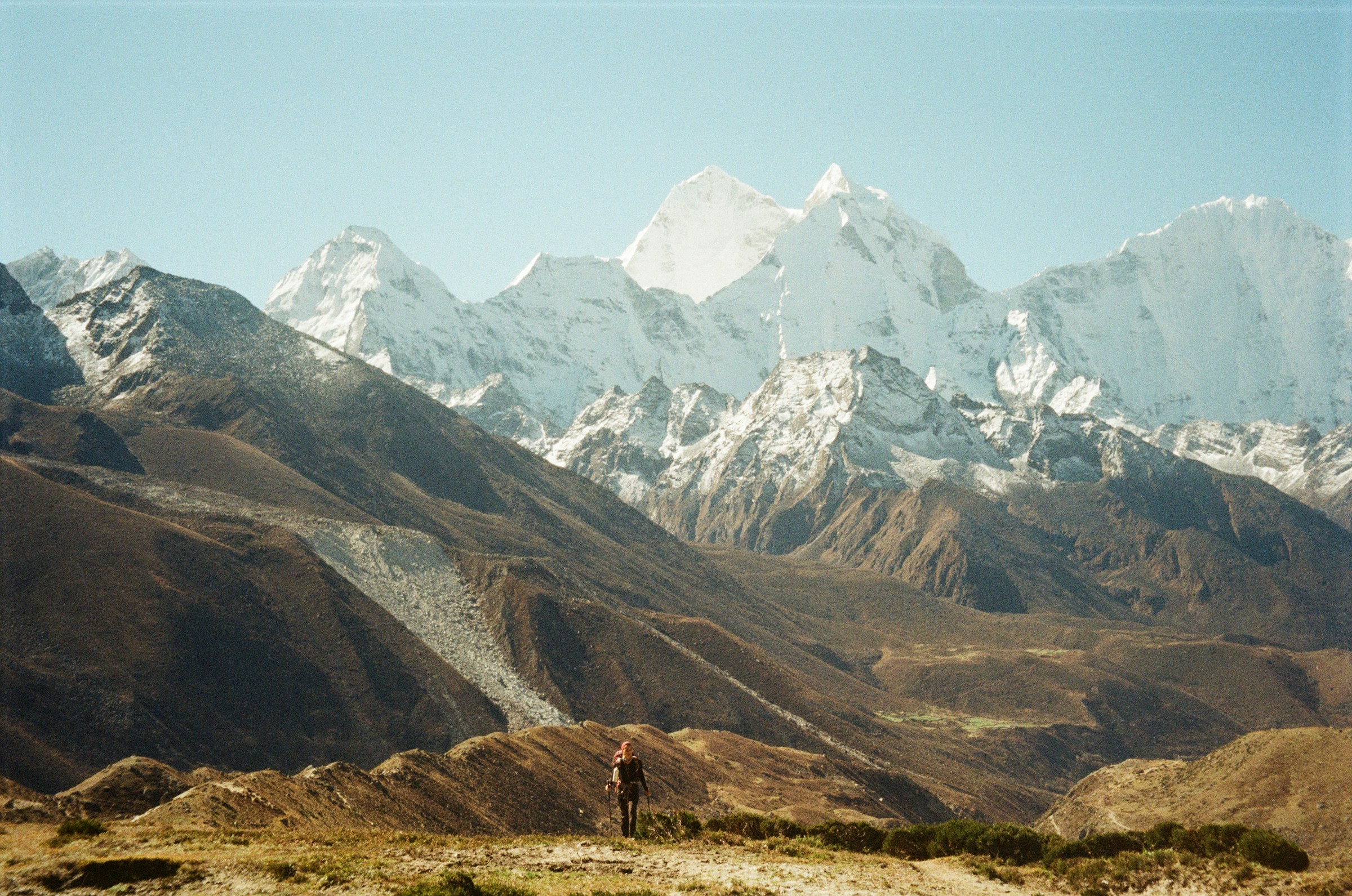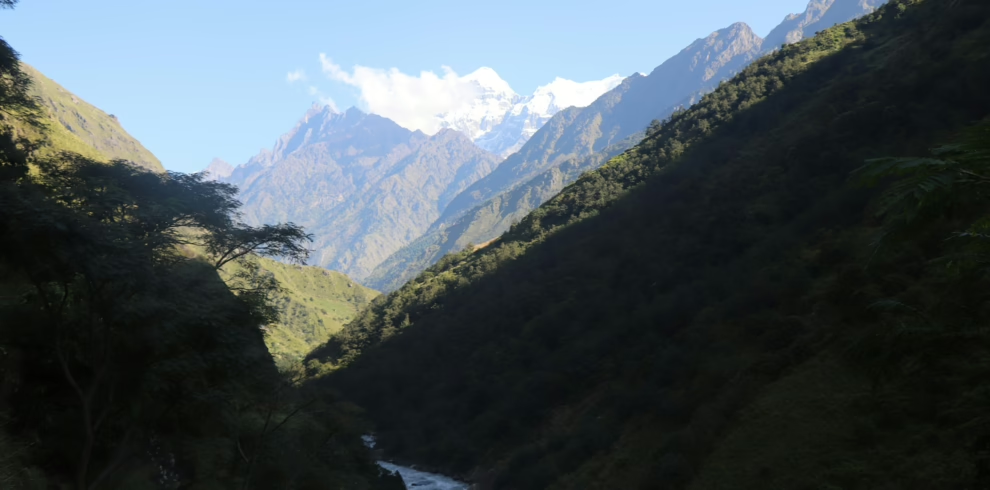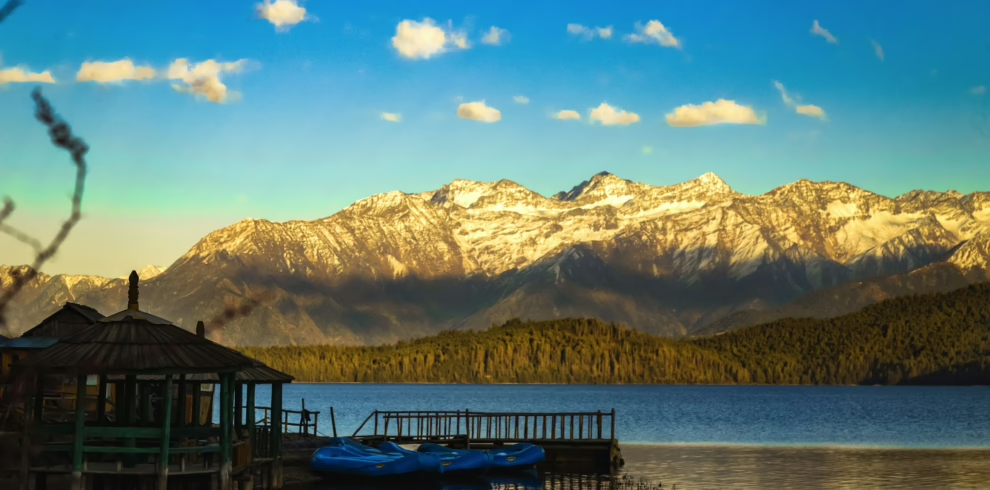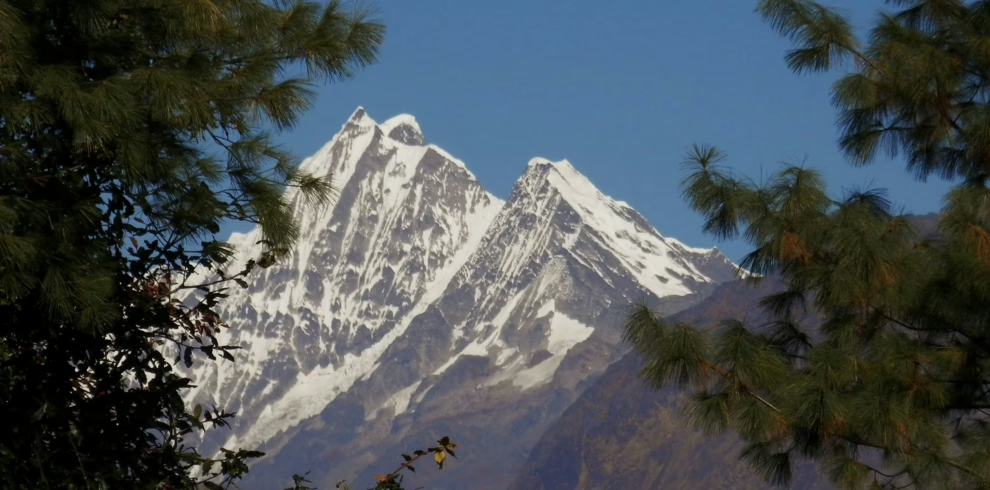The Everest Base Camp Trek Heli Out adventure offers a thrilling opportunity to explore the breathtaking Everest region in a way that’s perfect for those short on time but eager to experience the iconic Everest Base Camp. Designed for travelers who want to trek to base camp and then fly back to Lukla by helicopter (on a shared basis), this journey is the ultimate blend of adventure and convenience.
This 12-day trek is packed with excitement and requires strong physical endurance and mental resilience. The goal is to reach the foot of Everest in just 12 days, with enough time in Kathmandu to soak in the culture. With Green Lotus Trekking, you’ll embark on a journey that takes you far beyond the comforts of city life, vehicles, and cozy beds. Instead, you’ll immerse yourself in the raw beauty of the Himalayan landscape, connecting deeply with nature.
The 12 Days Everest Base Camp Trek Heli Out is more than just a trek; it’s an opportunity to challenge yourself, build your stamina, and find clarity away from the noise of everyday life. By the end of your journey, you’ll return refreshed and recharged, carrying the peace of the mountains with you as you face the world again.
10 days / 9 nights EBC with Heli to Lukla trip
Feel the Pulse of Everest Region
Highlights
- Visit UNESCO World Heritage Sites in Kathmandu
- Experience local culture by staying in clean, comfortable lodges during the trek
- Enjoy hearty breakfasts prepared by locals while taking in stunning aerial views of the Himalayas
- Immerse yourself in the untouched beauty of the Everest region and explore Sherpa culture, traditions, cuisine, and lifestyle
- Hike through Sagarmatha National Park’s lush forests and iconic suspension bridges adorned with vibrant prayer flags
- Benefit from ample rest, acclimatization, and safety support throughout the trek
- On your acclimatization day in Namche Bazaar, enjoy breathtaking views of Mount Everest from the Everest View Hotel
- Trek to Kala Patthar for panoramic views of Everest and surrounding peaks
- Witness Everest, the world’s tallest mountain, along with peaks like Ama Dablam, Lhotse, Cho Oyu, and Pumori
- Take a scenic helicopter ride from Gorakshep to Lukla, enjoying aerial views of the area.
Itinerary
Upon your arrival at Tribhuvan International Airport, our representative will greet you and transfer you to your hotel in a private tourist vehicle. Once you're settled at the hotel, we will schedule a trip briefing at the hotel lobby or restaurant.
We will arrange a bus from Kathmandu to domestic airport in Ramechapp based on your flight schedule to Lukla. During the 40-minute scenic flight, enjoy stunning sunrise views over snow-capped mountains. Upon arrival at Lukla's Tenzing-Hillary Airport—the gateway to the Himalayas—you’ll meet our crew and begin the Everest Base Camp Heli Out Trek. A short trek takes you to Phakding, where you’ll spend your first night on the trail.
The Everest Base Camp Heli Out Trek begins early in the morning, passing through beautiful pine forests and alongside the Dudh Koshi River, with stunning views of Mount Thamserku. After crossing several villages, you'll reach the entrance to Sagarmatha National Park. From there, the trail continues to the junction of the Dudh Koshi and Bhote Koshi Rivers, then climbs steeply to Namche Bazaar, where you’ll enjoy your first views of Mount Everest, Lhotse, and Nuptse.
Namche Bazaar, the largest town in the Khumbu region, offers amenities like ATMs, internet cafés, restaurants, bakeries, and shops. It's the perfect place to rest and acclimatize, which is why your Everest Base Camp Heli Out Trek itinerary includes an acclimatization day here. Although it's a rest day, you'll take a short hike to a nearby viewpoint, such as Thame or Khunde, and visit the Tourist Visitor Center to learn about Everest climbers, Sherpa culture, and local flora and fauna.
The Everest Base Camp Trek with Heli Out route begins with a climb offering distant views of Thamserku, Kusum Kangrib, and Kantega. As you cross a ridgeline, panoramic sights of Ama Dablam, Lhotse, Everest, Tawetse, and Nuptse come into view. The trail then descends to a junction—one path leading toward the Gokyo Valley. Continuing past the village of Trashinga, you’ll reach the Dudh Koshi River. The climb to Tengboche is initially steep but gradually eases through the forest. The ascent ends at a stone gate marking Tengboche’s entrance, with stunning views of the surrounding landscape.
Morning offers stunning views of Kangtega, Thamserku, Ama Dablam, Taboche, Kwangde, Tengboche, Lhotse, Nuptse, and other peaks—perfect for photography. The Everest Base Camp Heli Out Trek then descends to the Imja Khola riverbed, passing through rhododendron and birch forests. You'll visit a Buddhist nunnery in Deboche and continue past several chortens to Pangboche, where sweeping mountain views await. From upper Pangboche, the trail leads into the sparse alpine terrain of Shomare. After glimpsing the summit ridge of Mt. Pumori near Orsho, you'll reach the cold and windy village of Dingboche for an overnight stay.
Today is your second acclimatization day in Dingboche, as outlined in the Everest Base Camp Heli Fly Out Trek itinerary. On clear days, you may catch a glimpse of Makalu, the world’s fifth-highest mountain. Explore the scenic valley leading toward Island Peak for stunning views of the Lhotse-Nuptse range and Ama Dablam’s north face. After a short hike, take time to relax during the midday break. Alternatively, you can trek to Chhukung for panoramic views of Island Peak, Ama Dablam, Makalu, Tawoche, and other surrounding peaks.
Today's trek follows a gradual ascent to Thugla Pass, then continues with a gentle climb to Lobuche. Along the hill above Thugla Pass, you'll pass memorial stupas and prayer flags honoring climbers who lost their lives on Everest. Throughout the day, enjoy views of Tawache, Cholache, Ama Dablam, Thamserku, Pumori, Nuptse, and Kusum Kanguru. From the glacier ridge at Lobuche, you can also see Kala Patthar, the Khumbu Glacier, Everest Base Camp, and the surrounding glacial moraines.
This is the most important day of the Everest Base Camp Trek with Heli Out. From Thangma Riju, you'll enjoy a stunning 360-degree view of snow-capped peaks, including clear views of Mt. Nuptse and Mt. Pumori, though Mt. Everest remains hidden. After crossing the challenging terrain of the Changri Glacier, you'll spot the grey-green expanse of Kala Patthar beneath Mt. Pumori. The trek continues from Lobuche to Gorakshep, where you'll leave your bags at a teahouse before hiking to Everest Base Camp. After spending time at base camp, you'll return to Gorakshep for the night.
The Everest Base Camp Trek with Heli Out begins early today to witness Mount Everest as night gives way to a stunning sunrise. You'll enjoy views of Lingtren, Khumbutse, and Changtse during the two-hour ascent to Kala Patthar, with breaks recommended to rest and take photos. From Gorakshep, you'll have panoramic views of the Himalayas. After breakfast, a helicopter will pick you up from Gorakshep for a scenic flight back to Lukla—arguably the most thrilling and unforgettable part of the entire trek.
Today, travelers will enjoy a mountain flight from Lukla to Ramechapp. From there, you take a bus and drive back to Kathmandu. Once in Kathmandu, you’ll have time to shop and explore the city. The evening is reserved for celebrating the completion of the Everest Base Camp Trek with Heli Out.
On your final day in Nepal, you’ll have time for shopping and a relaxed sightseeing tour of the historic Kathmandu Valley before heading to Tribhuvan International Airport for your scheduled departure.
Includes/Excludes
Cost Includes
- Airport pickup and drop-off in a private vehicle
- 2 nights' accommodation in Kathmandu with breakfast
- Teahouse accommodation during the trek as per the itinerary
- All meals (breakfast, lunch, and dinner) during the trek
- All ground transportation in a private vehicle according to the itinerary
- Domestic flights (Kathmandu-Lukla-Kathmandu) on a regular Twin Otter plane
- Experienced, English-speaking, government-licensed trek guide
- Helicopter flight from Gorakshep to Lukla
- Staff costs, including salary, insurance, equipment, domestic airfare, food, and accommodation
- Green Lotus Trekking duffel bag, t-shirt, and trekking map
- All necessary trekking permits (National Park Permit, TIMS)
- Medical kit (carried by your trek guide)
- All government and local taxes and service charges
Cost Excludes
- Nepalese visa fee (available on arrival at Kathmandu airport)
- Extra accommodation in Kathmandu due to early arrival, late departure, or early return from the trek
- Lunch and evening meals in Kathmandu (and in case of an early return)
- Porter services if needed (recommended: one porter between two trekkers)
- International flight ticket
- Travel and rescue insurance
- Personal expenses (phone calls, internet, laundry, bar bills, battery charges, extra porters, bottled or boiled water, showers, etc.)
- Tips for guide(s), porter(s), and driver(s)
FAQs
To complete the trek, you will need two permits:
- Khumbu Rural Municipality Permit
- Sagarmatha National Park Permit
These can be obtained at the Nepal Tourism Office in Kathmandu or at the relevant counters in the Everest Region.
The Everest Base Camp Heli Out Trek is more convenient than the regular trek. You will only need to complete a one-way, 65 km trek, avoiding the return journey thanks to the helicopter ride. While the trek is less demanding, it may still be challenging for beginners.
Altitude sickness can affect anyone at high altitudes, including the 5,555 meters at Kala Patthar. While it’s unpredictable, following proper preparation and safety protocols can help prevent it.
If you experience altitude sickness, the staff will provide care, and if necessary, a helicopter rescue will be arranged. However, the cost of evacuation is your responsibility unless covered by travel insurance.
Yes, you can customize your itinerary by informing the staff. Clear communication will help achieve the best results.
Yes, groups larger than 5 people can be accommodated. However, due to weight limits on helicopters, groups larger than 6 will require multiple helicopters, which will incur extra costs.
Western-style toilets are available at teahouses, with private bathrooms and hot showers offered at lower elevations. At higher altitudes, shared bathrooms are typical, and in extremely cold weather, water may freeze, requiring the use of outdoor squat toilets. Always carry toilet paper and hand sanitizer.
While credit cards may be accepted at some lodges in Lukla and Namche, you will need local currency for purchases along the trek. It’s recommended to carry enough cash, which can be withdrawn from ATMs or exchanged in Kathmandu.
Vegetarian meals are widely available at lodges. We recommend eating vegetarian food to reduce the risk of food poisoning, as meat-based dishes are not ideal for high-altitude conditions.
We recommend keeping your trekking bag under 15 kg. Porters can carry up to 30 kg, and one porter is assigned to carry two bags. Please note that you are allowed 15 kg of luggage, including your handbag, for the flight to Lukla. Excess baggage will incur additional charges.
The Heli Out Everest Base Camp Trek begins with a scenic flight from Kathmandu to Lukla, followed by a trek to Phakding. The next day, you’ll continue to Namche Bazaar, where you can enjoy stunning views of Kwangde Peak, Kusum Kangaru, Mount Everest, Lhotse, Tawache, and other snow-capped peaks. After a day of acclimatization in Namche, you’ll head to Tengboche on day five to explore the area and visit the Tengboche Monastery, the oldest and largest in the region. From Tengboche, you’ll travel to Dingboche for another acclimatization day before continuing the trek to Gorakshep.
From Gorakshep, you’ll trek to Everest Base Camp, leaving your gear at the teahouse. After a memorable visit to Base Camp, you’ll return to Gorakshep. The following morning, you’ll hike to Kala Patthar for an unforgettable sunrise view of Mount Everest and nearby peaks. Afterward, you’ll descend to Gorakshep and take a shared helicopter flight to Lukla, where you’ll spend your last night on the mountain. The next day, you’ll fly back to Kathmandu, completing your Heli Out Everest Base Camp Trek.
Green Lotus Trekking Pvt. Ltd is excited to offer our carefully crafted 12-Day Everest Base Camp Trek with Heli Out itinerary, designed for an unforgettable adventure. Bookings are now open for 2025 and 2026. We can customize this package based on your time, budget, and fitness level. For more details on the trek cost, feel free to contact us.
Benefits of Booking the Everest Base Camp Trek Heli Out with Us:
- Pickup and drop-off service at international and domestic airports
- Free Everest Base Camp Trek map
- Oximeter to monitor blood oxygen levels
- Medical kit for emergencies
- Free excess luggage storage at Green Lotus Trekking store during the trek
What to Expect on the Everest Base Camp Trek Heli Out?
The Everest Base Camp Trek with Heli Out is a challenging adventure through some of the world’s most breathtaking landscapes. Expect to see towering mountains, including Mount Everest, lush forests, terraced fields, and traditional Sherpa villages.
You’ll hike for several hours each day, often on steep, rugged terrain. The trek reaches altitudes of up to 5,364 meters at Everest Base Camp and 5,555 meters at Kala Patthar, so altitude can be a challenge. Be aware of altitude sickness and ensure proper acclimatization.
Weather conditions can vary, from hot sun to rain and snow, so prepare with the right clothing and gear. Accommodation will be basic, but comfortable, with guesthouses, lodges, and tents offering an authentic local experience.
The trek also provides an opportunity to interact with Sherpa people and learn about their culture. Overall, it’s a once-in-a-lifetime experience that will challenge you physically and mentally, while offering some of the most stunning scenery on Earth.
Is the Everest Base Camp Trek Heli Out Right for You?
The Everest Base Camp Trek Heli Out is suitable for those in good physical condition with moderate hiking experience. The trek involves hiking at high altitudes, so you should have good cardiovascular fitness and be able to hike for several hours each day.
It’s also ideal for those comfortable with basic camping and carrying their gear. Mental toughness is essential to handle the challenges of high-altitude hiking in remote areas. The trek is not recommended for individuals with pre-existing medical conditions or a fear of heights. If you’re an experienced hiker, physically fit, and mentally prepared, this trek is for you.
Preparation for the Everest Base Camp Trek Heli Out
To prepare for the trek, focus on building physical fitness through cardiovascular and strength training, such as hiking, running, cycling, and weightlifting. Gradually increase the intensity of your workouts as the trek approaches. Mentally, familiarize yourself with the itinerary and potential challenges like altitude sickness. Setting goals and maintaining a positive mindset will help.
Ensure you have the necessary gear, including high-quality hiking boots, warm clothing, a sleeping bag, and a backpack. Consider getting travel and health insurance for the trek. Finally, it’s recommended to acclimatize by hiking in high-altitude areas or completing shorter treks before tackling Everest Base Camp Heli Out to Lukla.
Useful Information for Everest Base Camp Trek Heli Out to Lukla
Best Time for the Everest Base Camp Trek Heli Out
The best time for the Everest Base Camp Trek with Heli Out is during spring (March-May) and autumn (September-November). These seasons offer mild daytime temperatures, though nights can be cold, so bring a good down jacket and sleeping bag. Clear, consistent weather provides stunning views of Mount Everest and surrounding peaks, along with lush valleys, rhododendron blooms, and waterfalls. These seasons will create unforgettable memories of the Everest region.
Food and Meals on the Everest Base Camp Trek Heli Out
On the trek, you’ll enjoy ten breakfasts, nine lunches, and nine dinners at tea houses. Most meals are based on rice, lentils, and other grains, with Dal Bhat (lentil soup and rice) being the staple dish. Breakfast typically includes porridge, tea, and sometimes an egg, served around 8 AM. Lunch and dinner will often feature Dal Bhat or garlic soup, known to help prevent altitude sickness. Meals are communal, offering a chance to meet fellow trekkers.
Accommodation on the Everest Base Camp Trek Heli Out
Accommodation consists mainly of tea houses, which offer basic, comfortable lodging. Higher altitudes have fewer options, so plan accordingly. In Namche, you’ll find the Everest View Hotel with luxury amenities, including private rooms and Western-style bathrooms. As you ascend, accommodations become more basic, with shared bathrooms and sometimes lukewarm showers available for a small fee. Bring your own sleeping bag as blankets may not be provided.
Difficulty Level of the Everest Base Camp Trek Heli Out
The Everest Base Camp Trek with Heli Out is a challenging journey, reaching altitudes up to 5,555 meters at Kala Patthar. Altitude sickness is the primary concern, but staying hydrated, pacing yourself, and acclimatizing properly will help mitigate this risk. The trek typically involves 6-7 hours of hiking daily. While the trek is most popular in spring and autumn, the monsoon brings unpredictable weather, and winter months can be cold with possible snow, making the trek more difficult.
Travel Insurance for the Everest Base Camp Trek Heli Out
Travel insurance is essential for the Everest Base Camp Trek. Potential risks include altitude sickness, accidents, weather disruptions, and flight cancellations. Green Lotus Trekking recommends insurance that covers helicopter rescues, as you’ll be hiking at altitudes over 4,500 meters, where medical emergencies may require evacuation. Ensure your policy covers up to 6,000 meters, as most standard plans do not.
Altitude Sickness and Remedies on the Everest Base Camp Trek Heli Out
Altitude sickness can develop at high altitudes, so acclimatization is crucial. To prevent it, ascend gradually, stay hydrated, and avoid excessive exertion. If symptoms such as headaches, nausea, or fatigue arise, notify your guide immediately. In severe cases, descend to lower altitudes and consider medication like Diamox. Altitude sickness can be life-threatening if untreated, so monitor your health closely and ensure you have comprehensive travel insurance.
Packing List for the Everest Base Camp Trek Heli Out
- Waterproof backpack
- Sleeping bag
- Flashlight and batteries
- Down jacket
- Hiking pants
- Light jacket (for daytime)
- Woolen hat and gloves
- Trekking poles
- Trekking boots
- Woolen socks
- Water purification tablets
- Toiletries
- Small bags (for porters to carry)
Safety Measures and Guide Support
Green Lotus Trekking prioritizes your safety throughout the trek. Our experienced guides undergo wilderness first aid training and ensure your comfort and security. We assess the quality of meals and accommodation, and provide necessary gear and first aid kits. If anyone experiences altitude sickness, our guides are authorized to adjust the itinerary to ensure your health and safety.
Booking the Everest Base Camp Trek Heli Out
Green Lotus Terkking is a government-approved tour operator, with over ten years of experience. We are recognized by the Nepal Mountaineering Association (NMA) and the Trekking Agencies Association of Nepal (TAAN). To book, a 10% deposit is required. Please send essential documents (passport, photos, travel insurance, and flight details) within a week of booking. Payments can be made via bank transfer, Western Union, or online. Upon arrival in Nepal, you can pay via cash, bank transfer, or credit card. We will send you payment instructions and total amounts for your convenience.








